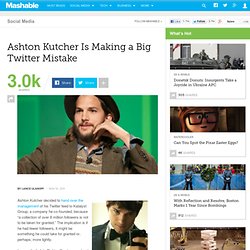

Twitter's not a site, it's a protocol. Twitter-like micromessaging is a relatively new communications model, with unique characteristics that affect how we use it and what’s appropriate.

It’s an RSS feed for people, a way to directing the attention of audiences, and a means of reaching the famous without burdening them with an obligation to respond. In short, Twitter is a human API. It’s being defined in real time in front of our eyes, through an amazing example of Internet Darwinism. I’ve been spending a bunch of time on Twitter lately, partly because it’s fun, and partly because of the community management and social networking portions of a book I’m writing with @seanpower. Here are some observations so far. Asymmetric follow Twitter is neither one-to-one (unicast) nor one-to-many (broadcast.) This produces strange behaviors. It also means there’s less context for a conversation, since we don’t easily see who’s talking to whom. Extensible syntax HTTP was the same way. Fluid relationships The constraints of brevity An open API. Ashton Kutcher Is Making a Big Twitter Mistake.
Ashton Kutcher decided to hand over the management of his Twitter feed to Katalyst Group, a company he co-founded, because “a collection of over 8 million followers is not to be taken for granted.”

The implication is if he had fewer followers, it might be something he could take for granted or, perhaps, more lightly. I guess that’s fair. Eight million is a number I can comprehend, but cannot imagine on my own Twitter feed, which hovers at 35,000. On the other hand, I do not take my 35K followers for granted. In fact, I doubt even those with 2,000, 200 or 15 followers take them for granted. For those of you who don’t already know, Kutcher’s actions, which he explained in a post called "Twitter Management," came after he tweeted a defense of fired Penn State football coach Joe Paterno. Now Kutcher has decided that he can’t be trusted with his own feed.
In other words, from now on, you @APLUSK followers will never know if it’s Ashton tweeting or a Twitter account handler. Not Lovin’ It: 5 Ways McDonalds Could Have Prevented a Hashtag Nightmare (& How You Can Avoid One) Like an awkward actor on stage, McDonalds has found itself at the mercy of hecklers.

McDonalds promoted a tweet for feel-good stories regarding the brand, #McDStories, only to find the hashtag taken over by Twitter users with a sense of the absurd. Now, #McDStories serves as a case study for what not to do when promoting a tweet. So, what can you do to avoid ever causing such a hashtag nightmare for your brand? 1.) Be self-aware. "Here's why: Promoting your tweet puts you on EVERYONE'S radar---not just your fans' who would normally love to hear from you. " "When u make something w/pride, people can taste it," - McD potato supplier #McDStories mcd.to/zIlXXu— McDonald's (@McDonalds) January 18, 2012 2.) 3.) 4.)
Promoted tweet. 5.) Online Database of Social Media Policies.